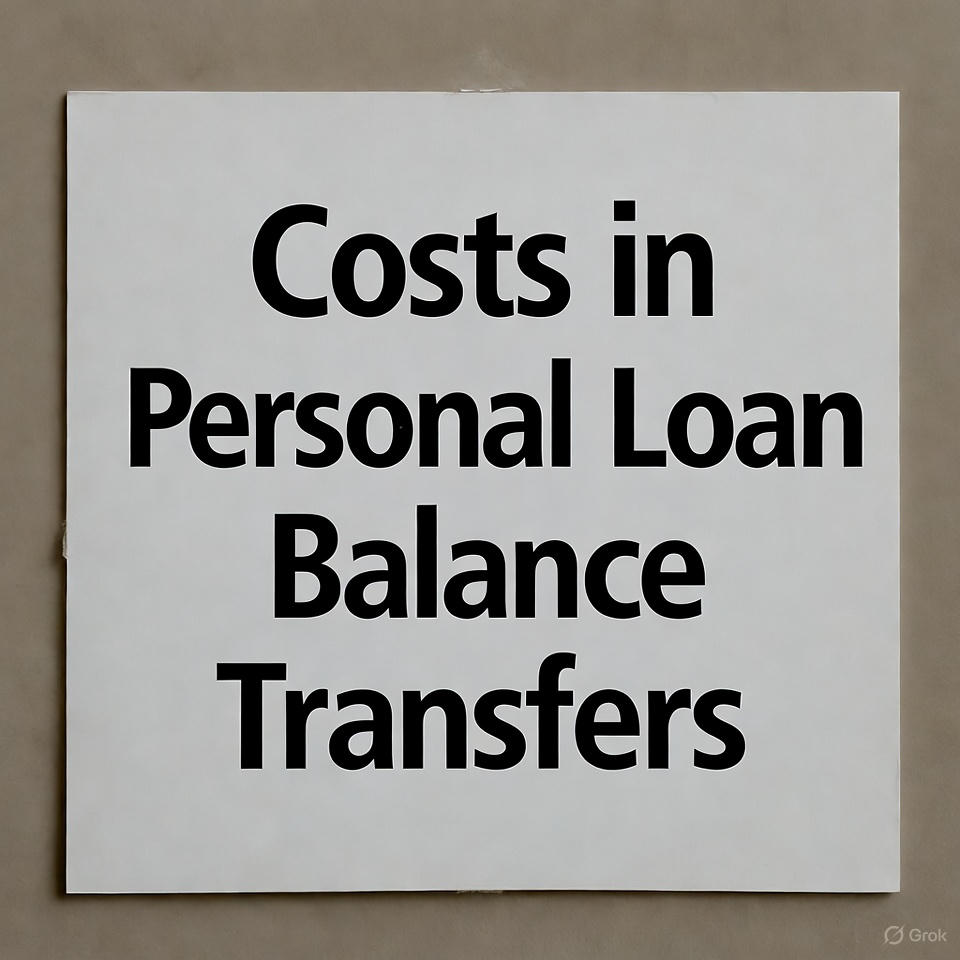Let’s say you have taken a personal loan for 4 years and then you find a better offer. It comes with a 6-year repayment period with a lower interest rate. The idea of switching sounds like a smart financial move, but is it really as beneficial as it seems?
A balance transfer isn’t just about lower EMIs. There are costs involved that can quietly add up. These sometimes reduce the actual savings you expect. So, before you make the switch, know what these expenses are and how they affect the deal. Let’s learn them in detail.
Why should you consider a personal loan balance transfer?
A personal loan balance transfer makes sense in situations where your current loan terms are no longer favourable. If interest rates have dropped or another lender is offering significantly lower rates, transferring can reduce your overall interest burden. It’s beneficial if you need lower EMIs by extending the repayment tenure. This is useful especially when your financial situation has changed. Additionally, if you have multiple loans, consolidating them under a single lower-interest loan simplifies repayments and improves cash flow.
Existing Lender
Before you transfer your personal loan, your existing lender will require you to close the loan with them. This isn’t always cost-free. Many lenders charge foreclosure fees, which can be a percentage of the outstanding principal. While some loans allow foreclosure without penalties, others impose charges that can go up to 5% of the remaining balance. Additionally, if your loan had a lock-in period, you might be unable to close it early without extra costs. It’s crucial to check your loan agreement and calculate the total foreclosure amount before deciding to transfer.
Foreclosure fees
Foreclosure fees exist because lenders lose out on the expected interest earnings when a loan is closed early. The fee is meant to compensate for that loss. These charges vary by lender and loan type. Some lenders waive them for floating-rate loans, while fixed-rate loans often come with strict foreclosure penalties. Also, certain banks may have different foreclosure terms for salaried and self-employed borrowers. Always verify how much you’ll need to pay before opting for a transfer, as high foreclosure costs can reduce the actual savings from a lower interest rate.
New Lender
While the new lender may offer lower interest rates or better repayment terms, the transfer process isn’t without costs. Every lender charges a processing fee for taking over your loan. This fee is usually non-refundable and can either be a fixed amount or a percentage of the transferred loan. Even if the interest rate is attractive, a high processing fee can eat into the expected savings.
Processing fees
Processing fees cover the administrative work involved in approving and setting up your new loan. Many lenders charge flat fees (e.g., Rs. 2,000 – Rs. 5,000). On the other hand, others take a percentage-based fee (usually 1% to 3% of the loan amount). Besides that, Goods and Services Tax (GST) applies to these fees, which further increases the total cost. Some lenders may offer discounts or waivers on processing fees during special promotions. So, always check the ongoing offers.
Take the right steps to leverage its benefits
Staying informed about the costs involved in a personal loan balance transfer can help you make a financially sound decision. Before making the switch, take time to calculate the total savings after factoring in foreclosure charges, processing fees and any other hidden costs. Use a loan balance transfer calculator to compare different lenders and check if the lower interest rate genuinely benefits you in the long run. While a transfer eases repayment and reduces EMIs, it’s only worthwhile if the savings outweigh the expenses. Evaluate properly so that you don’t end up paying more than you intended to save.






